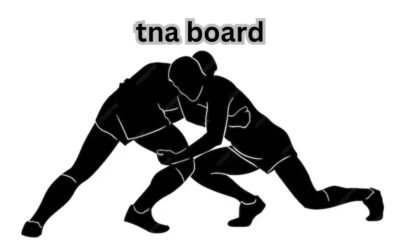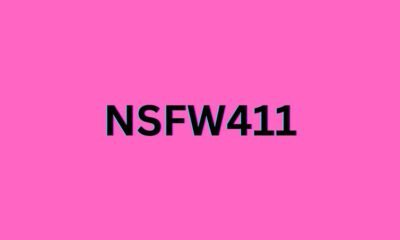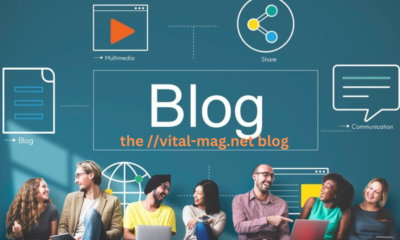INSURANCE
The Ultimate Guide to Moline Auto Insurance: Everything You Need to Know

Auto insurance is essential for every vehicle owner, but finding the right policy can be a daunting task. If you’re living in Moline, Illinois, you’re likely searching for the best auto insurance options that cater to your specific needs. This comprehensive guide will walk you through everything you need to know about Moline auto insurance, helping you make an informed decision that provides you with the protection you need.
Understanding Auto Insurance in Moline
What is Auto Insurance?
Auto insurance is a contract between you and an insurance company that protects you against financial loss in the event of an accident or theft. The policy covers various aspects such as property, liability, and medical expenses, depending on the coverage you choose.
Why is Auto Insurance Important?
Auto insurance is not just a legal requirement in Moline but also a crucial safeguard for your finances. Without proper coverage, you could face significant out-of-pocket expenses in the event of an accident, damage, or theft. Moreover, auto insurance provides peace of mind knowing that you’re protected against unforeseen circumstances.
Types of Auto Insurance Coverage in Moline
Liability Coverage
Liability coverage is mandatory in Illinois and covers bodily injury and property damage that you may cause to others in an accident. This type of coverage does not protect your vehicle but ensures that the other party’s expenses are covered.
Collision Coverage
Collision coverage pays for damage to your vehicle resulting from a collision with another car or object. This coverage is especially important if you have a newer or more expensive vehicle, as it helps cover repair or replacement costs.
Comprehensive Coverage
Comprehensive coverage protects your vehicle against non-collision-related incidents such as theft, vandalism, or natural disasters. It’s an essential add-on for those looking to safeguard their investment from a wide range of potential risks.
Uninsured/Underinsured Motorist Coverage
This type of coverage protects you if you’re involved in an accident with a driver who either doesn’t have insurance or doesn’t have enough insurance to cover the damages. Given the number of uninsured drivers on the road, this coverage is highly recommended.
Medical Payments Coverage
Medical payments coverage, also known as MedPay, covers medical expenses for you and your passengers in the event of an accident, regardless of who is at fault. This coverage can be a lifesaver, especially if you don’t have health insurance or have a high deductible.
Factors Affecting Auto Insurance Rates in Moline
Driving Record
Your driving record plays a significant role in determining your auto insurance rates. A clean driving record with no accidents or traffic violations will typically result in lower premiums.
Vehicle Type
The make and model of your vehicle also impact your insurance rates. Luxury cars, sports cars, and vehicles with high repair costs generally come with higher premiums.
Age and Gender
Younger drivers, especially males under 25, tend to pay higher insurance rates due to their higher risk of accidents. Conversely, older, more experienced drivers often enjoy lower rates.
Location
Your location within Moline can affect your insurance premiums. Areas with higher crime rates or a higher likelihood of accidents may result in higher rates.
Credit Score
In Illinois, insurance companies are allowed to use your credit score to determine your premiums. A higher credit score can lead to lower insurance rates, while a poor credit score might result in higher premiums.
Tips for Finding Affordable Auto Insurance in Moline
Shop Around
Don’t settle for the first quote you receive. Shopping around and comparing quotes from multiple insurers can help you find the best deal. Make sure to compare the same level of coverage to get an accurate comparison.
Bundle Your Policies
Many insurance companies offer discounts if you bundle your auto insurance with other policies, such as homeowners or renters insurance. Bundling can save you a significant amount on your premiums.
Increase Your Deductible
Raising your deductible—the amount you pay out of pocket before insurance kicks in—can lower your premiums. Just make sure you can afford the higher deductible in case of an accident.
Take Advantage of Discounts
Many insurers offer discounts for various reasons, such as having a clean driving record, being a good student, or installing safety features in your vehicle. Be sure to ask about all available discounts when getting a quote.
How to Choose the Right Auto Insurance in Moline
Assess Your Needs
Before choosing an auto insurance policy, assess your needs based on factors like the value of your car, your driving habits, and your financial situation. This will help you determine the right amount of coverage.
Read the Fine Print
Always read the terms and conditions of your policy carefully. Understand what is covered and what is not, and be aware of any exclusions or limitations that could affect your coverage.
Consult an Insurance Agent
If you’re unsure about the best coverage options, consider consulting an insurance agent. They can provide personalized advice and help you find a policy that meets your needs and budget.
Conclusion
Choosing the right auto insurance in Moline doesn’t have to be complicated. By understanding the different types of coverage, factors that affect your rates, and tips for finding affordable insurance, you can make an informed decision that protects both you and your vehicle. Remember to compare quotes, ask about discounts, and consult with an insurance agent if needed to ensure you get the best possible coverage at the most competitive price.
FAQs
What is the minimum auto insurance coverage required in Moline?
In Moline, Illinois, the minimum required coverage includes $25,000 for bodily injury per person, $50,000 for bodily injury per accident, and $20,000 for property damage.
How can I lower my auto insurance rates in Moline?
You can lower your auto insurance rates by maintaining a clean driving record, increasing your deductible, bundling policies, and taking advantage of available discounts.
What should I do after a car accident in Moline?
After a car accident, ensure everyone’s safety, call the police, exchange information with the other driver, and report the accident to your insurance company as soon as possible.
Can I drive without auto insurance in Moline?
No, driving without auto insurance in Moline is illegal and can result in fines, license suspension, and other penalties.
Is it worth getting comprehensive coverage for my car in Moline?
If you have a newer or valuable car, comprehensive coverage is worth considering as it protects against theft, vandalism, and other non-collision-related incidents.
How does my credit score affect my auto insurance rates in Moline?
Insurance companies in Illinois use credit scores to determine premiums. A higher credit score typically results in lower rates, while a lower score may increase your premiums.
INSURANCE
Understanding Unit 102: A Comprehensive Guide

In various educational and professional contexts, “Unit 102” denotes a specific module or course component. Its content varies across disciplines, but it often introduces foundational concepts essential for advanced learning. This article delves into the significance of unit 102 across different fields, highlighting its objectives, typical content, and its role in building a solid knowledge base.
The Role of Unit 102 in Educational Curricula
Unit 102 serves as a building block in many educational programs, providing students with essential knowledge and skills. It often follows an introductory unit (Unit 101) and precedes more specialized modules. The content of unit 102 varies depending on the discipline but generally aims to deepen understanding and prepare students for more complex topics.
Common Themes in Unit 102 Across Disciplines
While the specifics of Unit 102 differ across fields, several common themes emerge:
- Fundamental Concepts: Unit 102 often covers core principles that are crucial for advanced study. For example, in a British Sign Language course, Unit 102 focuses on conversational skills, enabling learners to engage in basic social interactions.
- Practical Skills: Many Unit 102 modules emphasize hands-on skills. In electrical installation programs, Unit 102 addresses health, safety, and environmental considerations, ensuring that learners can work safely and responsibly.
- Professional Practices: Some Unit 102 units introduce industry standards and professional behaviors. In salon management courses, Unit 102 covers presenting a professional image, teaching students the importance of appearance and conduct in a professional setting.
Examples of Unit 102 in Various Fields
To illustrate the diversity of Unit 102, let’s explore its application in different disciplines:
- British Sign Language (BSL): In BSL courses, Unit 102, titled “Conversational British Sign Language,” focuses on developing both productive and receptive skills. Learners engage in simple exchanges, covering topics like describing people, using numbers, discussing interests, and talking about food and drink. The unit emphasizes correct hand shapes, facial expressions, and BSL structure to ensure effective communication.
- Electrical Installation: In the NVQ 2346-03 Level 3 Electrical Installation Qualification, Unit 102 is dedicated to “Health, Safety and Environmental Considerations.” This unit equips learners with the knowledge to apply health and safety legislation in the workplace, assess work environments for hazards, and implement safe working procedures. It covers topics such as risk assessments, safe use of tools and equipment, and environmental legislation compliance.
- Salon Management: For those pursuing a career in the beauty industry, Unit 102 often focuses on “Presenting a Professional Image in a Salon.” This unit teaches learners how to maintain a professional appearance, communicate effectively with clients, and adhere to salon policies. It covers aspects like personal hygiene, appropriate attire, and professional behavior to ensure a positive client experience.
The Importance of Unit 102 in Skill Development
Unit 102 plays a crucial role in bridging the gap between introductory knowledge and more advanced concepts. By focusing on fundamental skills and professional practices, it prepares learners for the challenges of their chosen field. Successfully completing unit 102 often serves as a prerequisite for more specialized units, underscoring its importance in the learning pathway.
Conclusion
Understanding the role and content of Unit 102 is essential for students and professionals across various disciplines. By providing foundational knowledge and skills, Unit 102 sets the stage for advanced learning and professional development. Whether it’s mastering conversational skills in a new language, adhering to safety standards in technical fields, or presenting a professional image in client-facing roles, Unit 102 equips learners with the tools they need to succeed.
FAQs
What is Unit 102?
Unit 102 is a foundational module in many educational and vocational programs, focusing on essential concepts and skills specific to a field of study.
What topics does Unit 102 cover?
The topics vary by discipline but often include core principles, practical skills, and professional practices, such as safety standards, communication skills, or professional image presentation.
Why is Unit 102 important?
It bridges the gap between introductory and advanced concepts, helping learners build a solid foundation for further study or professional development.
Can I take Unit 102 without completing Unit 101?
Typically, Unit 101 is a prerequisite as it introduces basic concepts needed to succeed in Unit 102.
How is Unit 102 assessed?
Assessment methods vary but may include practical demonstrations, written exams, or coursework designed to test both theoretical knowledge and applied skills.
INSURANCE
Understanding Oil Transfer Pumps: A Comprehensive Guide

Oil transfer pump are essential tools in various industries, facilitating the efficient movement of oil and other fluids from one container to another. Whether you’re in the automotive sector, industrial manufacturing, or agriculture, understanding the types, applications, and maintenance of these pumps is crucial. This guide delves into the intricacies of oil transfer pumps, offering insights to help you make informed decisions.
What is an Oil Transfer Pump?
An oil transfer pump is a device designed to move oil from one location to another. These pumps are vital in scenarios where manual transfer would be inefficient or impractical. They come in various designs and capacities, tailored to specific applications and fluid types.
Types of Oil Transfer Pumps
- Manual Pumps: Operated by hand, these are suitable for small-scale operations where precision and control are paramount. They are cost-effective and easy to use but may not be ideal for transferring large volumes.
- Electric Pumps: Powered by electricity, these pumps are efficient and capable of handling larger volumes. They are commonly used in industrial settings where speed and volume are critical.
- Pneumatic Pumps: Utilizing compressed air, pneumatic pumps are ideal in environments where electrical power sources are unavailable or pose a risk. They are often used in hazardous areas due to their safety features.
- Hydraulic Pumps: These pumps use hydraulic power to transfer oil, offering high pressure and flow rates. They are suitable for heavy-duty applications requiring robust performance.
Applications of Oil Transfer Pumps
- Automotive Industry: Used for transferring engine oils, lubricants, and other fluids during maintenance and manufacturing processes.
- Industrial Manufacturing: Essential for moving oils and lubricants in machinery, ensuring smooth operations and reducing downtime.
- Agriculture: Employed in transferring oils for machinery maintenance, ensuring equipment longevity and efficiency.
- Marine: Vital for transferring fuel oils and lubricants in ships and boats, maintaining operational readiness.
Key Features to Consider
When selecting an oil transfer pump, consider the following features:
- Flow Rate: Determines how quickly the pump can transfer oil. Higher flow rates are suitable for large volumes, while lower rates offer precision.
- Viscosity Compatibility: Ensure the pump can handle the viscosity of the oil you intend to transfer.
- Material Construction: Pumps should be made from materials compatible with the oil type to prevent corrosion and degradation.
- Power Source: Choose between manual, electric, pneumatic, or hydraulic based on your operational needs and available resources.
Maintenance and Safety Tips
- Regular Inspection: Periodically check for wear and tear, leaks, and other signs of damage.
- Proper Cleaning: After use, clean the pump to prevent contamination and ensure longevity.
- Follow Manufacturer Guidelines: Adhere to the manufacturer’s instructions for operation and maintenance to ensure safety and efficiency.
- Use Appropriate Personal Protective Equipment (PPE): Always wear suitable PPE to protect against potential hazards during operation.
Conclusion
Oil transfer pumps are indispensable tools across various industries, offering efficient and safe fluid transfer solutions. By understanding the different types, applications, and maintenance practices, you can select the right pump for your needs and ensure its optimal performance over time.
FAQs
What types of oil transfer pumps are available?
There are manual, electric, pneumatic, and hydraulic oil transfer pumps. Each type is suited to specific applications and operational needs.
How do I choose the right oil transfer pump?
Consider factors such as the type of oil, flow rate, viscosity, pump material, and available power sources when selecting a pump.
Are oil transfer pumps safe to use?
Yes, when used according to manufacturer guidelines. Always inspect the pump before use and wear appropriate personal protective equipment (PPE).
How do I maintain an oil transfer pump?
Regularly inspect the pump for wear, clean it after use, and follow the manufacturer’s maintenance recommendations to ensure longevity and efficiency.
INSURANCE
Unlocking Your Future: How to Earn a Free Master’s Degree Online


 CRYPTO3 months ago
CRYPTO3 months agoCrypto-Engine.Pro Blog: Your Go-To Source for Crypto Trading Insights

 GENERAL3 weeks ago
GENERAL3 weeks agoUnderstanding TNA Board: A Comprehensive Guide for Beginners

 GENERAL4 months ago
GENERAL4 months agoEverything You Need to Know About NSFW411: The Ultimate Guide

 ENTERTAINMENT4 months ago
ENTERTAINMENT4 months agoExploring Mywape: Your Guide to Quality Vaping

 FOOD5 months ago
FOOD5 months agoExploring the Benefits of süberlig: A Comprehensive Guide

 FOOD5 months ago
FOOD5 months agoUnveiling the Beauty of Tamisie: A Guide to this Exquisite Fabric

 BLOG4 months ago
BLOG4 months agoDiscover the Secrets Behind the /vital-mag.net blog: A Closer Look at the Popular Blog

 ENTERTAINMENT4 months ago
ENTERTAINMENT4 months agoNavigating Erome: Tips and Tricks for a Safer Experience on Adult Platforms





















